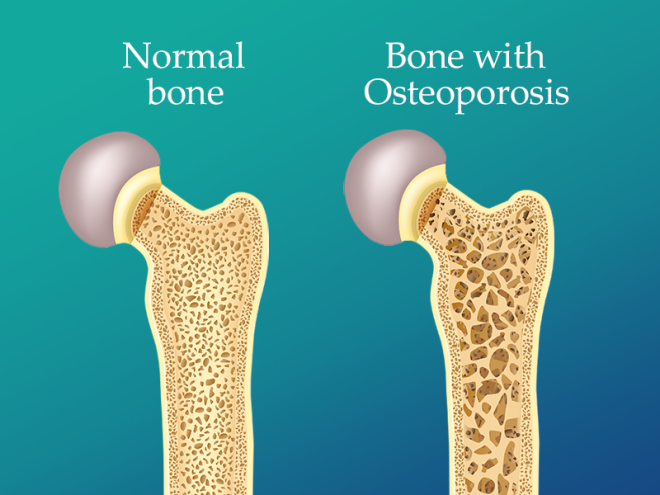
Osteoporosis is a common bone disorder that affects millions of people worldwide. It is a condition in which the bones become weak and brittle, making them more susceptible to fractures. Osteoporosis can occur in both men and women, but it is more common in women, especially after menopause.
The bones in our body are constantly being broken down and rebuilt. This process is called remodeling, and it is essential for maintaining strong and healthy bones. However, when the rate of bone breakdown exceeds the rate of bone formation, the bones become weaker and more prone to fractures.
There are several risk factors for developing osteoporosis. These include:
- Age: The risk of osteoporosis increases as we get older.
- Gender: Women are at a higher risk of developing osteoporosis than men.
- Menopause: The decrease in estrogen levels after menopause is a major risk factor for osteoporosis.
- Family history: A family history of osteoporosis increases the risk of developing the condition.
- Lifestyle factors: A sedentary lifestyle, smoking, excessive alcohol intake, and a diet low in calcium and vitamin D can increase the risk of osteoporosis.
Osteoporosis is often called a “silent disease” because it often goes unnoticed until a fracture occurs. The most common sites for fractures in people with osteoporosis are the hip, spine, and wrist. These fractures can be very painful and can lead to disability and loss of independence.
There are several ways to prevent or manage osteoporosis. These include:
- Calcium and vitamin D: A diet rich in calcium and vitamin D can help to build and maintain strong bones.
- Exercise: Weight-bearing exercises such as walking, running, and strength training can help to build bone density and reduce the risk of fractures.
- Medications: There are several medications available that can slow down bone loss and reduce the risk of fractures.
- Fall prevention: Taking steps to prevent falls, such as removing tripping hazards and installing handrails, can reduce the risk of fractures.
In conclusion, osteoporosis is a common bone disorder that can have serious consequences if left untreated. By taking steps to prevent or manage osteoporosis, we can maintain strong and healthy bones and reduce the risk of fractures. If you are concerned about your risk of developing osteoporosis, speak to your healthcare provider about steps you can take to reduce your risk.